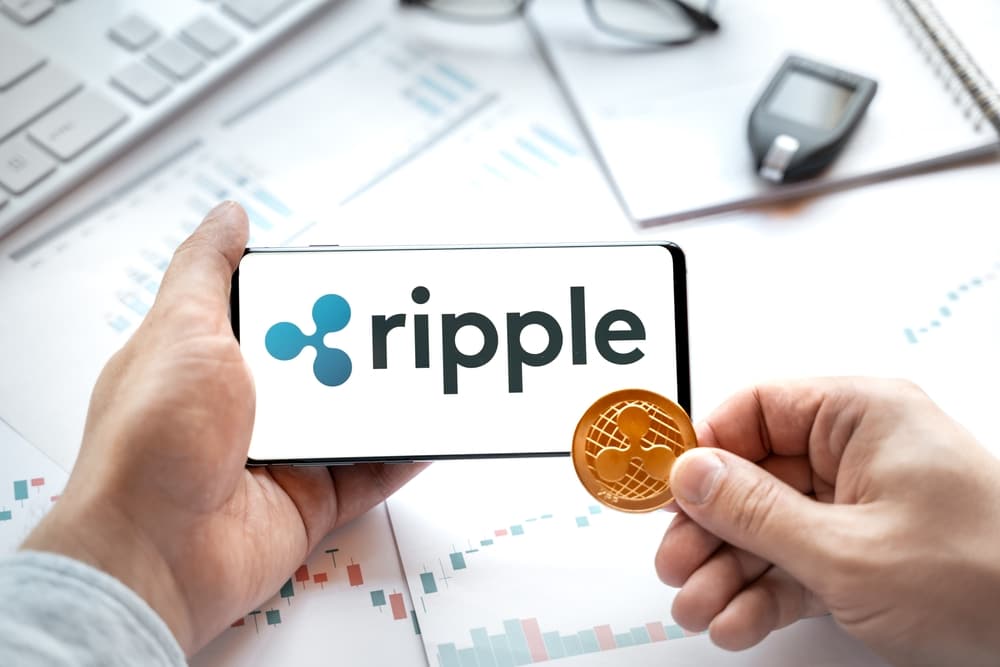
RippleX Vice President Predicts Tokenized Asset Market to Surpass $16T on Public Blockchains
RippleX VP Markus Infanger expressed optimism that the tokenized asset market will balloon and hit $16 trillion in value. The senior executive at RippleX notes that banks, asset management firms, and institutional investors have embraced the race to onboard financing assets on-chain.
Infanger observes that multiple traditional finance (TradFi) firms are warming up to the tokenization of financial assets on public blockchains. The RippleX VP observes that onboarding the public blockchains occurs as the world witnesses a race to blockchain-oriented tokenization.
TradFi Onboarding Assets on Public Blockchains
The vice president considers that TradFi players are onboarding the financial assets on-chain to pursue production deployment and solve challenges within various value chains.
Infanger expressed optimism about TradFi onboarding assets during the ongoing Paris Blockchain week. The experienced executive noted that TradFi’s use of blockchain is tangible.
Infanger admitted that the onboarding trend illustrates a paradigm shift for blockchain technology. The movement is beyond the hype as more TradFi illustrates the massive leap into unfolding utility.
TradFi Pursues Holistic Blockchain Solutions
Infanger noted the recent estimations by market observers that tokenized markets could test the $16 trillion mark. The executive considers that such a milestone would be eightfold more significant than the cumulative market value of the crypto sector.
The RippleX executive reflected on the development realized within the tokenization space. He added that tokenization is closer to the reality envisioned earlier, predominantly on the public blockchains, unlike previous perceptions as exclusively on IBM or JPMorgan.
Infanger acknowledged that conversations with several financial institutions are advanced as they explore tokenization projects of issuing assets using the XRP Ledger. The executive admits that institutions have their distribution ready and articulate the use cases and mechanism to utilize the underlying blockchain.
Ripple focuses on offering global payment solutions via the patented Ripple Network, identified as RippleNet. RippleNet runs on the consensus XRP Ledger – XRPL.
Unlike most crypto that caters to peer-to-peer needs, Ripple eyes connect banks, payment service providers, and crypto asset exchanges. The firm targets facilitating real-time settlement and lower transaction fees.
Infanger reflected on the HSBC partnership with Metaco – a Ripple-owned tech subsidiary, in November 2023. The partnership facilitates institutional investors’ holding of tokenized securities on the newly unveiled custody platform.
Infanger confessed that Ripple’s business model had become holistic by integrating XPRL solutions. The executive pointed out the provision of blockchain-based payment solutions with the capacity to address the economic and financial friction.
Although a payments-first company, Ripple’s recent developments yield a broader appeal to the decentralized finance (DeFi) and TradFi players.
Infanger observed that Ripple features a custody, payments, and contributions arm to the XRP Ledger. The combination yields a holistic digital asset infrastructure tailored to offer a value proposition for TradFi and developers solving DeFi problems.
Ripple Expands to Stablecoin
Ripple revealed plots to issue in-house US dollar-pegged stablecoin using the XRPL with Ethereum to complement the offerings to the institutions. Ripple Labs chief technology executive David Schwartz affirmed the pursuit of stablecoin.
Infanger echoed Schwartz’s views that Ripple’s expansion into stablecoin is timely for a market poised to hit $2.8 trillion by 2029, given that $22 trillion remains off-chain.
Infranger observed that the stablecoin market value is $130 billion, which presents grounds for colossal demand. The executive predicts an enormous growth given that the sector is still at its onset.
Infanger admitted that developers within the XRPL ecosystem constantly requested the tier-one stablecoin that would match market leaders Tether’s USDT and Circle’s USD Coin (USDC). He admitted that Ripple had utilized stablecoins in past small-scale experimentations featuring XRP and payment products.
Infanger acknowledged that the team envisions massive institutional DeFi usage alongside tokenization loads on XRPL. The usage would extend to the payments product and XRP ecosystem.
Infranger was noncommittal when Ripple intended to unveil the stablecoin. Also, he failed to divulge the name of the Ethereum and XRPL-based tokens.
Editorial credit: Ira Lichi / Shutterstock.com




